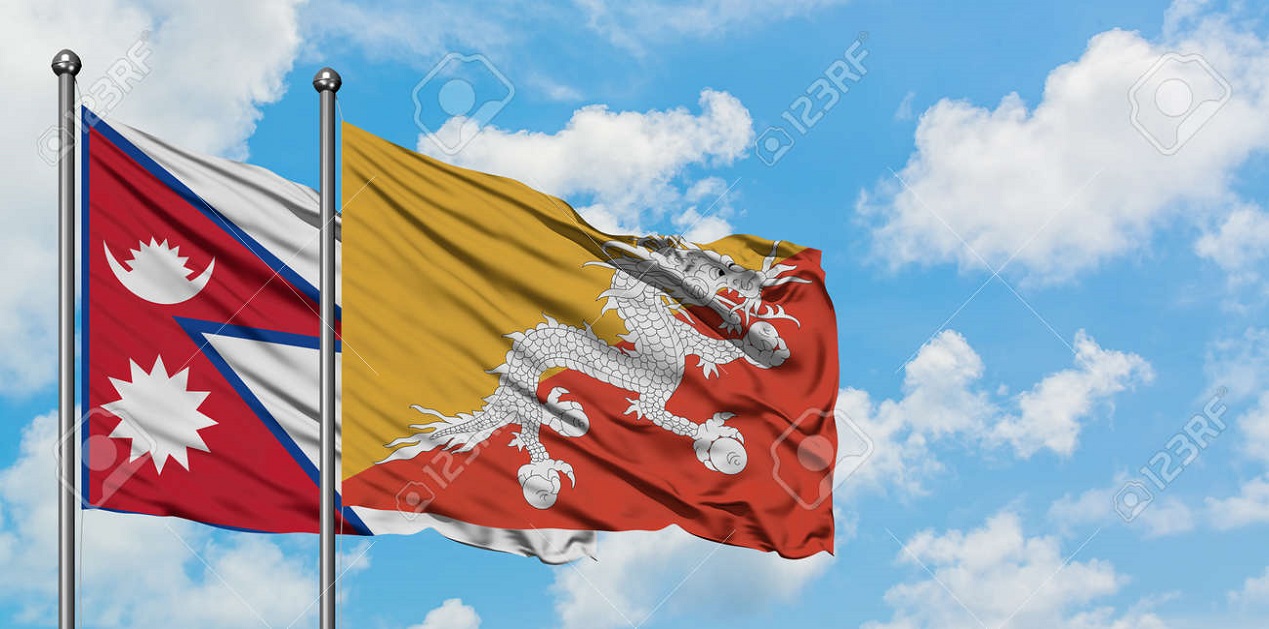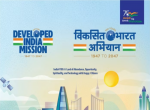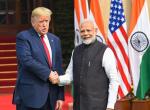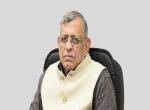Nepal
The year 2021 can be surmised as a year of political upheavals, economic downfall, and geo-political uncertainties for Nepal. Also, when countries worldwide were engaged in making arrangements to tackle the COVID-19 pandemic, Nepal’s management of COVID-19 was somewhat unsatisfactory due to poor governance and corruption. The political developments in Nepal in 2021 had an imprint of the decades-long political churning. Since the 1950s, political instability has had a negative impact on the overall growth. However, with the advent of democracy in 2006, political parties were expected to contribute to stabilising the nation by respecting the revolutionary and electoral contributions of the people of Nepal. Contrary to this, the political landscape in Nepal has remained acutely unstable. Amidst these challenges, here is a look at Nepal’s significant developments in 2021.
Political Instability
In the first half of 2021, Nepalese politics took a cue from the events of December 2020. A government led by Nepal Communist Party (NCP) Chairman KP Sharma Oli recommended that President Bidya Devi Bhandari dissolve the Parliament amidst internal feuds between KP Oli and another Chairman of the NCP Pushpa Kamal Dahal ‘Prachanda’. The political tussle between KP Oli and Prachanda was primarily centred on transferring the power to Prachanda to lead the government for the next half of the five-year tenure. In the 2017 general elections, KP Oli’s Communist Party of Nepal (UML) and Prachanda’s Maoist Center had formed an electoral alliance. After winning a large mandate, the two parties merged to form NCP. However, political rivals in the past and competing personalities, KP Oli and Prachanda, failed to resolve their differences. KP Oli had hoped to part ways with Prachanda by dissolving the Parliament. However, the Supreme Court reinstated the Parliament and quashed notification for early election in April and May 2021. After a judicial loss in the apex court, KP Oli had once again dissolved the Parliament in May 2021, which the court again reinstated. With two back-to-back defeats, another court verdict called the 2018 merger of UML and Maoists unconstitutional as there was another party already existing with a similar name. Restoring the two political parties into their older forms came as a relief to both Prachanda and Oli.
In July 2021, while hearing several petitions filed against Prime Minister KP Oli’s unconstitutional moves to dissolve the Parliament twice, the court ordered that the second-largest party Nepali Congress be allowed to form the next government. The Nepali Congress Chairman Sher Bahadur Deuba took oath as the Prime Minister within three days of the verdict and won the vote of confidence in alliance with the Maoists and Janta Samajbadi Party-Nepal. Within a month in office, Prime Minister Deuba unveiled a common minimum programme to reflect upon the aims and objectives of the coalition government. However, it took months for him to appoint heads of several ministries, including Foreign Affairs, Commerce and Industry, etc., due to a lack of understanding between the coalition partners. As a result, the governance had come to a halt.
Other than the challenges of governance, 2021 saw the judiciary coming to a standstill due to allegations against Chief Justice CS Rana. Nepal Bar Association and judges in the Supreme Court alleged that Chief Justice Rana had sought a cabinet berth for his brother-in-law Gajendra Bahadur Hamal. After days of criticism in the media, Hamal resigned from his appointment as the Minister for Industry, Commerce and Supplies in the Deuba cabinet. The activities of the apex Court continue to be affected by the ongoing protests.
Geo-political and Strategic
During KP Oli’s tenure as Prime Minister, the geo-political environment in Nepal was primarily dominated by Oli’s continuous push to raise border issues with India. While the diplomatic channels between Nepal and India were still in discussion to resolve the issue, there seemed to be no end to Oli’s ultra-nationalistic assertions, wholly based on anti-India manoeuvring. On the other hand, Nepal’s open bonhomie with China was clearly in sync with the longstanding desire of Beijing to strengthen its footprints in Nepal. During a political confrontation between KP Oli and Prachanda, a high-level Chinese delegation visited Nepal to mediate and facilitate peace. The Chinese embassy in Nepal was also involved in micro-managing the internal political affairs of Nepal, which was criticised by the opposition and the Nepalese media. Oli had also kept the United States in a dilemma in getting the Millennium Challenge Corporation (MCC) agreement ratified in the Parliament. The US had signed a $500 million compact with Nepal in 2017, “aiming to maintain road quality, increase the availability and reliability of electricity, and facilitate cross-border electricity trade between Nepal and India—helping spur investments, accelerate economic growth, and reduce poverty”.[1]
With Deuba as the new Prime Minister, Nepal began to focus on reviving ties with India. Within six months, a number of Nepali Congress Party delegations visited India to reboot relations with India. These steps have helped strengthen the bilateral ties. Also, the bilateral cooperation between India and Nepal has moved to an advanced level with a cross border petroleum pipeline and railways getting functional. Also, in November 2021, Nepal Army chief Gen Prabhu Ram Sharma paid a four-day visit to India to boost defence ties between the two neighbouring nations. Gen. Sharma received the title of honorary “General of Indian Army” by the President of India. In November 2020, Indian Army chief Gen. Manoj Mukund Naravane invited Gen. Sharma during his visit to Nepal, where he was honoured with the honorary “General of Nepalese Army” title. This tradition of honouring honorary ranks on a reciprocal basis shows a deep, rooted connection between India and Nepal.
On the other hand, PM Deuba ordered to review the Chinese presence in Nepal. Home Minister Bal Krishna Khand formed a committee to inspect the alleged reports on Chinese land grab of Nepalese territory in the bordering region. Reportedly, the committee found several objectionable Chinese constructions on the Nepalese territory.[2] Home Minister Khand has asserted to take up the matter with the Chinese authorities. However, an investigative approach of the government towards China has bothered Beijing. The latter is already unhappy with the fall of the Oli government. Also, the much-hyped Nepal-China relationship during KP Oli’s tenure has somewhat subsided, especially in respect of the BRI. The Detailed Project Report of the land connectivity and trans-Himalayan railways project connecting Kathmandu with Tibet shows no bright spots due to their high cost and unavailability due to geographic impediments.[3]
Meanwhile, the Deuba government still remains undecided on the US-sponsored MCC due to opposition from various quarters. On the regional front, the arrival of the Taliban in Afghanistan in August 2021 created panic in Nepal as more than fifteen hundred Nepalese migrant workers in Afghanistan were caught in the crisis. To repatriate its nationals from
Afghanistan, Nepal sought the help of the international community, including India. The latter had promptly repatriated hundreds of Nepalese from Afghanistan. Also, in its fight against COVID-19, Nepal has sought the help of India, China, the US, Europe and neighbouring Bhutan in supplying vaccines for its population. While India has resumed the supplies of vaccines after a halt due to its own local demands, a small country like Bhutan came to the rescue of Nepal and supplied surplus vaccines to Nepal.
Economic
Nepal’s economic growth has acutely been affected by the COVID-19. In 2018, Nepal’s GDP growth was recorded at 7.62 per cent, which went down to 6.65 in 2019. The growth went further downhill to -2.08 percent in 2020. However, in 2021, Nepal recorded a 2.3 percent growth rate, and it is likely to grow by 4.1% in fiscal year (FY) 2022, says the Asian Development Bank. [4] The coalition government led by the Nepali Congress has set an ambitious 7 percent economic growth target for mid-July 2022. With tourism and remittances as two strong pillars of the Nepalese economy, they all have been severely hit by COVID-19. There seems no immediate relief for these sectors to revive amidst the rise of Omicron cases worldwide.
Bhutan
The Kingdom of Bhutan, on the other hand, has once again proved its potential as one of the vibrant evolving democracies. The country made some very remarkable developments in 2021. Beginning with its fight against the COVID-19, Bhutan has inoculated its overall 77 percent population, of which adults constitute 93 percent and children between 12-17 years at 93 percent as of November 2021. By December 31, 2021, Bhutan had reported a total of 2,660 COVID-19 cases with three deaths. [5] These developments have not only been lauded by the WHO but also countries worldwide have appreciated the way Bhutan has handled the situation. Bhutan is among a few countries which started to provide booster doses to its people. Bhutan even went ahead and shared surplus doses with Nepal and Thailand. The second very interesting development included Bhutan’s aim to vaccinate its 100 per cent stray dog population with anti-rabies doses, which reflects Bhutan’s commitment to preserving the eco-system and Buddhist way of treating every soul with respect. However, in recent years, Bhutan has struggled to deal with the rising corruption cases in the country. Corruption is not new to Bhutan, and in the past ten years country’s global rank has improved to 24th in the world as a corrupt nation.
Economic Development
On the economic front, Bhutan’s GDP growth rate was recorded -3.7 per cent in 2019. This went further downhill to -2.4 per cent in 2020. In the pre-COVID era, Bhutan’s GDP growth was 4.4 per cent. An almost absence of tourism in 2020 and 2021 has hit Bhutan’s hospitality and transport business, which is reflected in its GDP growth.[6] Manufacturing and construction were also affected during 2021 from disruptions to critical inputs, temporary export restrictions, foreign labour shortages, and weaker external demand. The Asian Development Outlook says Bhutan’s growth is expected to recover moderately to 3.7% in FY2022 with strong policy responses to the coronavirus, including the country’s vaccination drive.[7]
Foreign Relations
On the foreign policy front, Bhutan’s ties with India advanced in a number of new fields. In September 2021, India’s space agency ISRO inked a pact with Bhutan to launch a small national satellite of Bhutan into Space. Bhutan’s feet in the Space sector, with the help of India, makes it a unique example for smaller countries around the world to achieve their aspirations. Also, cooperation in the area of pandemic, trade, hydropower and people to people with India reflected an all-weather bonhomie between the two countries. In December 2021, Prime Minister Modi was awarded Bhutan’s highest civilian decoration, Order of the Druk Gyalpo, for India’s help during COVID-19. On the other side, Bhutan signed a MoU to expedite the Bhutan-China boundary negotiations. These discussions have been taking place since 1984, and the MoU is seen as a critical step for China in making its diplomatic presence in the Himalayan kingdom. To date, Bhutan does not maintain any diplomatic ties with China. Meanwhile, India is closely observing these developments between Bhutan and China, and it issued a statement on the border MoU stating that India has noted the development.[8]
Conclusion
In 2021, the growth trajectory of the two Himalayan countries, Nepal and Bhutan, was marred by the COVID-19 pandemic. Since its global spread, COVID has hardly let the smaller economies recover from the losses. With the tourism and outward labour migration remaining affected by the COVID-19, Nepal and Bhutan will need to introspect on strengthening their agricultural and hydropower sectors, respectively, to recover their GDP in years to come. Meanwhile, Nepal’s political insatiability and corruption issues in Bhutan continue to present challenges. Also, as Nepal moves towards holding local elections in 2022, Nepali Congress Party will face challenges in forging an electoral alliance with its present coalition partners in the government.
Endnotes :
[1] “Nepal Compact” MCC, https://www.mcc.gov/where-we-work/program/nepal-compact, accessed on December 28, 2021.
[2] “Study panel says ‘there are issues’ along Nepal-China border in Humla” Kathmandu Post, October 23, 2021,
https://bit.ly/3E4YvIk, accessed on October 23, 2021.
[3] “No light at end of trans-Himalayan train tunnel” Nepali Times, June 20, 2021, https://www.nepalitimes.com/banner/no-light-at-end-of-trans-himalayan-train-tunnel/, accessed on June 21, 2021.
[4] “Nepal’s Economy to Modestly Grow in FY2022” Asian Development Bank, September 2021, https://www.adb.org/news/nepal-economy-modestly-grow-fy2022, accessed on December 28, 2021.
[5]WorldOMeters, “Bhutan Coronavirus Cases”, https://www.worldometers.info/coronavirus/country/bhutan/.
[6] “Bhutan” Asian Development Bank, https://data.worldbank.org/country/bhutan, accessed on 14 January 2022.
[7] “Asian Development Outlook 2021 Update: Transforming Agriculture in Asia,” Asian Development Bank, https://www.adb.org/sites/default/files/publication/726556/ado2021-update.pdf, accessed on December 28, 2021.
[8] “Transcript of Weekly Media Briefing by the Official Spokesperson” Ministry of External Affairs, October 14, 2021, https://bit.ly/34FPfhi, accessed on January 07, 2021.
(The paper is the author’s individual scholastic articulation. The author certifies that the article/paper is original in content, unpublished and it has not been submitted for publication/web upload elsewhere, and that the facts and figures quoted are duly referenced, as needed, and are believed to be correct). (The paper does not necessarily represent the organisational stance... More >>
Image Source: https://previews.123rf.com/images/sezerozger/sezerozger2005/sezerozger200506172/146914919-nepal-and-bhutan-flag-waving-in-the-wind-against-white-cloudy-blue-sky-together-diplomacy-concept-in.jpg?fj=1











Post new comment